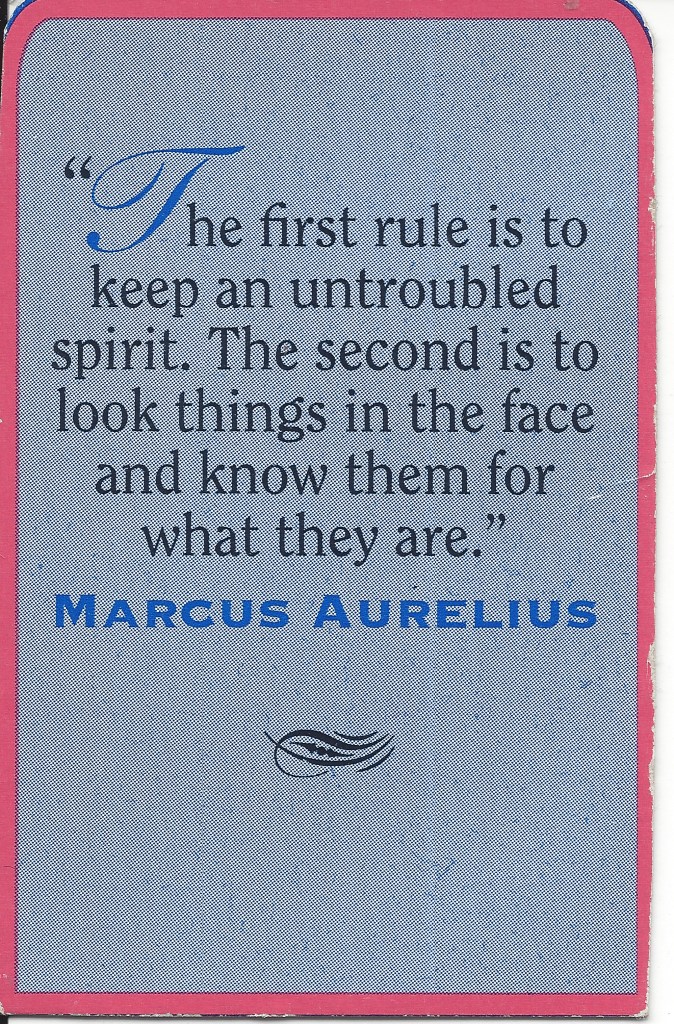Between work and getting sick, I didn’t get to finish this post earlier, but it relates to days 2 & 3 for the Daily Stoic‘s 14 Day Stoic Challenge. For day 2 we had to start a new habit, ideally focused on self-improvement. This is related to a core aspect of Stoicism that really appeals to me – the idea that we must train, practice and act. Not just meditate or pray. I’m not disparaging those things, and Stoicism can coexist with religious practice, but Stoicism is a philosophy for living, right here, right now. The notion of training one’s mind, body, and soul to think right and do right lines up well with my formative years as an athlete and Soldier, and the imperative to act, not just wax philosophical (or worse list out the reasons why not) appeals to me as business person who has to drive outcomes, not clock hours.
At any rate, I chose to read for 30 minutes every day. I used to read all the time when I was younger, but I’d lost that in favor of working late and screen time, neither of which made me a better person, in fact quite the opposite. And I’ve got a tremendous backlog of books to get through. As well as the act of making sure that I do read every day helps build discipline, something which, when cultivated, will make everything you want to accomplish easier. But you don’t have to start with an iron will, you can build it up by doing something small everyday. Like reading, or making the bed.
Day 3’s challenge was the counterpoint, to give up something that is either an impediment to living well, or actually dis-improving your life. Better said in the challenge itself:
Today, we’re getting rid of a dubious life choice that is unworthy of us.
I find this to be such a powerful statement, and it rings true in my own life. My own poor choices have been most often made in moments of self-destructiveness when I did not value my own self. Almost as a way of punishing myself. Again, from the challenge:
[Take] the affirmative act of choosing yourself, as James Altucher would say, by getting rid of something that takes from you.
For this challenge, I am giving up alcohol for the month of January. While this isn’t maybe the biggest vice someone could quit, and there’s (probably) nothing wrong with a beer or glass of wine at the end of a day, I could do without it. It often affects my sleep, and I often have more than one when I do drink, so I am just going to cut it out for a month and see how it goes.








